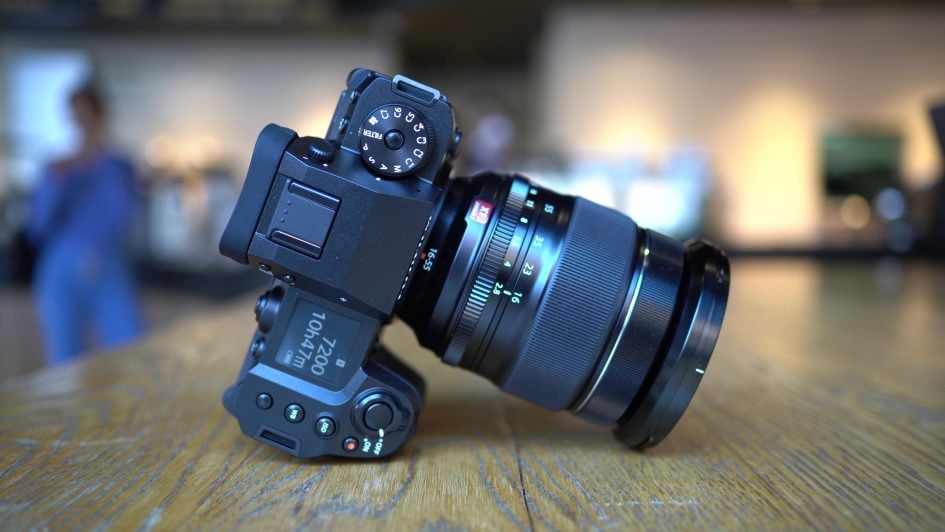Fujifilm XH2 review
-
-
Written by Gordon Laing
Verdict
The Fujifilm X-H2 is a tremendous camera for stills photographers. There’s always some concern when resolutions are increased, but the new 40 Megapixel sensor and image processor delivered great-looking images in my tests, out-of-camera, packed with detail and respectably clean up to 1600 ISO.
While you will enjoy some resolution benefit over previous 26 Megapixel models with any lens, the X-H2 unsurprisingly shines brightest when paired with the latest primes. Couple one of these with the Pixel Shift mode and you’ll enjoy by far the most detailed images from the X-series to date, but with the out-of-camera style you know and love.

Meanwhile the X-H2S version may be technically faster, but I rarely felt the X-H2 holding me back in day to day use. The autofocus is sufficiently swift and accurate, especially paired with a recent lens, and while the tracking isn’t quite as confident as the S, it remains faster overall than the X-T4 and delivered plenty of keepers whether I was shooting school sports or seagulls in flight, with generous latitude for cropping too. The only thing to watch out for is skewing with the electronic shutter.
As for the body, you’ll already know the design from the X-H2S, identical from the outside bar the S on the front. So you’re getting a comfortable, weather-sealed body with a large and detailed viewfinder, flip-screen, twin card slots, plethora of ports and a decent battery with two optional grips. Lovers of Fujifilm’s vintage aesthetic – which includes me by the way – may lament the loss of the dedicated shutter and ISO dials of the X-H1, but to be honest once I started shooting, I didn’t notice.
The X-H2 and S look and feel like serious cameras ready to do a job rather than start a conversation. Plus Fujifilm has many other form factors in its series and I’m sure we’ll see an X-T5 and X-Pro 4 within a year sporting the same sensor and plenty of dials to turn, hopefully including a reinstated AF switch because I’m not a fan of that new button. Whether you speculate and wait for as yet unannounced products or buy an X-H2 now really depends on your preferred body style and how soon you want that new sensor.
If you like the APSC format but aren’t wedded to Fujifilm, the obvious alternative is the Canon EOS R7, undercutting the X-H2 on price, albeit with an inferior viewfinder, no 8k video nor CF Express slot, and a very limited selection of native lenses designed for APSC mirrorless.
The only other question regards larger formats around the same price point. The X-H2 may be cheaper than the S version, but you could still buy one of several lower-cost full-framers for the same money. While there are pros and cons to both types of sensors, I’d say the decision should more boil down to which system appeals to you as a whole, taking the look and feel of the body, its features and crucially the lens selection all into account as well as the image quality under the conditions you actually shoot in. Personally speaking I was delighted by the photos out of the X-H2 and loved shooting with it. As such it’s a camera I can Highly Recommend, even if the dials of the X-T series still call out to me.
Fujifilm X-H2 verdict for videographers
For videographers it’s easy to assume the X-H2 is outshone by the S version with its stacked sensor. After all that model not only enjoys noticeably reduced rolling shutter making it much more practical for fast subjects and pans, but also includes 4k 120, and a true open-gate mode that records the full sensor area for more cropping flexibility.
But the X-H2 responds with 8k recording and a $500 cheaper price tag, not to mention the benefit of a little extra firmware development time giving it a handy manual focus meter and more accurate auto white balance, although I’d be surprised if the S doesn’t also get them in a future update.
The inclusion of 8k is key as the X-H2 actually becomes one of the most affordable cameras with the capability, at least with a decent sized sensor and interchangeable lenses, plus there were no overheating issues in my tests either – take that Canon R5.
That said, 6.2k on the X-H2S version comes very close in quality, which coupled with 4k 120 and reduced rolling shutter, makes it preferable overall for video and in my opinion worth spending the extra. If you’re solely focused on video, be sure to also compare the Lumix GH6, and if you don’t need the highest resolution, there’s a number of solid full-frame options at around the same price.
Ultimately the X-H2 was designed as a high resolution camera, successfully pushing the pixel-count for still photos in the APSC format to a point where 8k video could also be captured.
The S version may be arguably more attractive overall for video, but couple that 8k capability with the shared benefits of respectable autofocus, internal ProRes, a great viewfinder, full-size HDMI, good-looking footage out-of-camera and plenty of dynamic range in F-Log 2, and the X-H2 becomes a highly compelling video camera for two grand. I suspect many owners will buy it for the photo resolution first, before quickly realising they’re also getting a great quality video camera too.
Check prices on the Fujifilm X-H2 at B&H, Adorama, WEX UK or Calumet.de. Alternatively get yourself a copy of my In Camera book, an official Cameralabs T-shirt or mug, or treat me to a coffee! Thanks!



